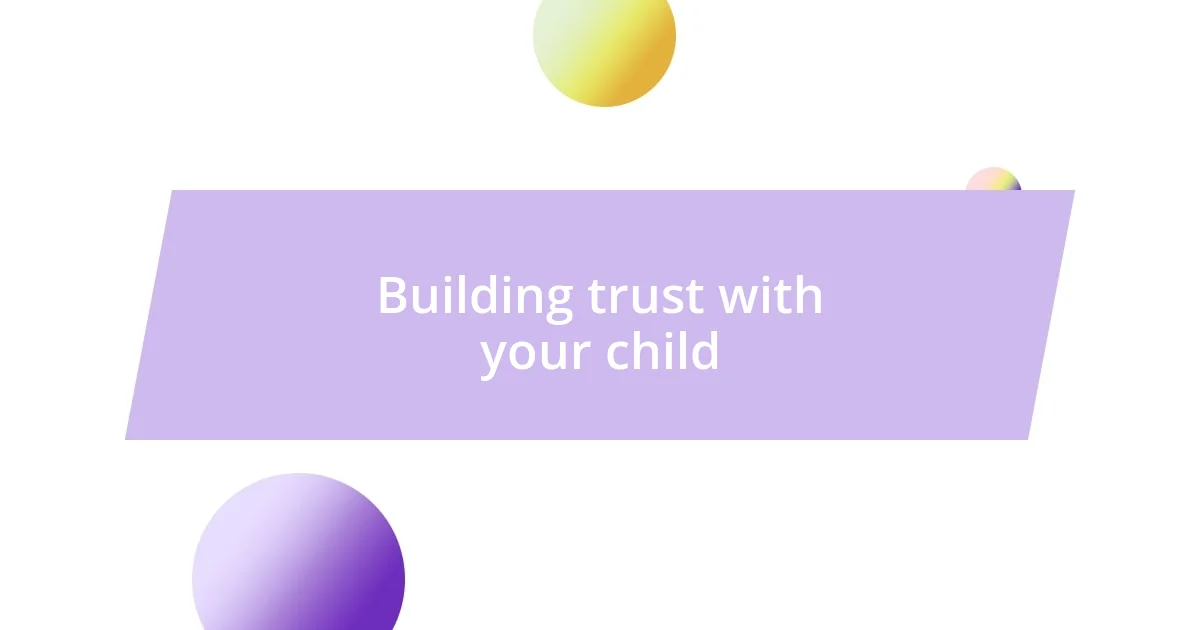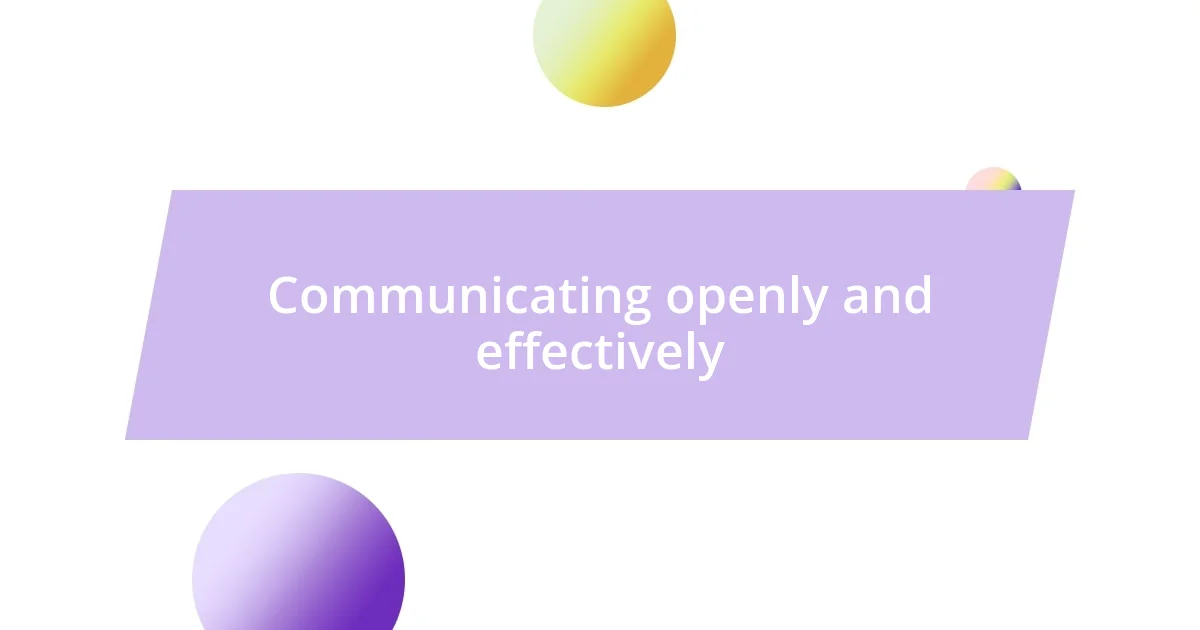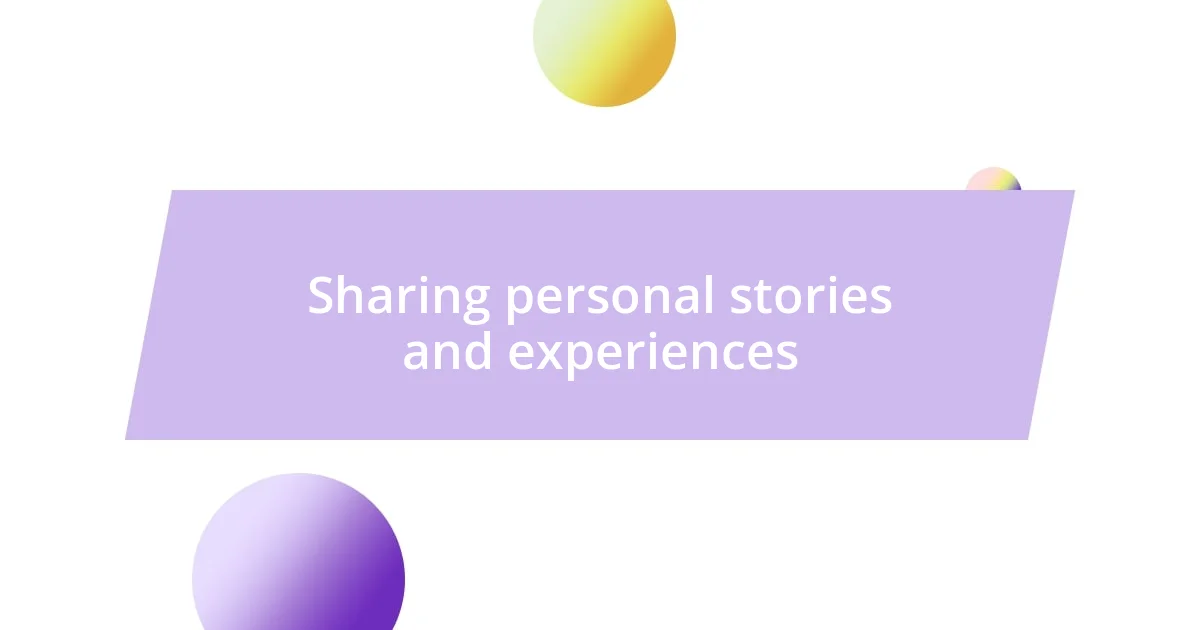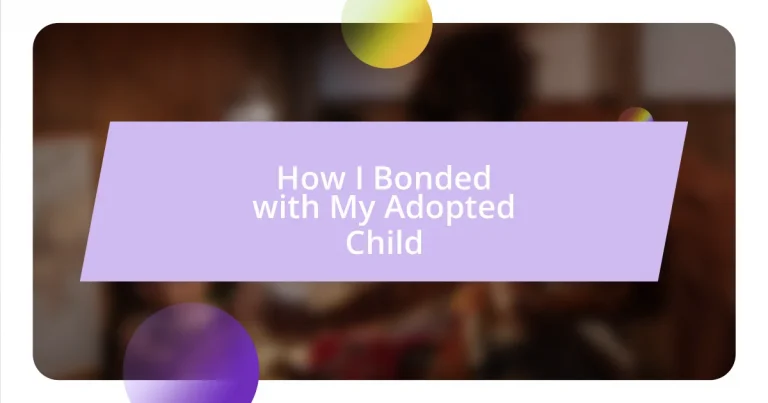Key takeaways:
- Building trust involves creating a safe environment, acknowledging a child’s past, and fulfilling small promises to foster security.
- Sharing activities, like cooking or arts, enhances emotional growth and strengthens the bond through shared joy and laughter.
- Celebrating milestones and special moments, such as achievements and birthdays, fosters confidence and deepens connection in the relationship.

Understanding adoption dynamics
Adoption dynamics are incredibly nuanced, often shaped by a blend of emotional, social, and psychological factors. I remember feeling a mix of excitement and anxiety when I first held my adopted child; it was a moment filled with both hope and uncertainty. How do you nurture a bond when the foundation is different from a traditional relationship?
It’s fascinating to consider how each adoption story is unique, influenced by the child’s background and experiences. There were times I sensed my child’s apprehension, perhaps stemming from their past. In those moments, I learned the importance of patience and active listening. It’s crucial to create an environment where they feel safe and understood. Have you ever found yourself struggling to comprehend someone else’s perspective?
Building trust in adoption can take time, and I’ve felt that first-hand. I vividly recall a day when my child hesitated to share a feeling, and I realized just how much their previous experiences shaped their behavior. This understanding led me to reflect on what love truly means in the context of adoption—it’s not just about affection but also about consistency and reliability. How can we foster feelings of security when the path hasn’t always been straight?

Building trust with your child
Building trust with your child is about creating a safe space where they can express themselves freely. I remember clearly the first time my child curled up next to me on the couch, watching a movie. That simple gesture was monumental; it was their way of saying they felt comfortable enough to be vulnerable. It made me realize that trust is built in those quiet moments, where love transcends words.
Establishing trust also means honoring your child’s past while gently guiding them forward. Once, during a school project, my child opened up about how they struggled with friendships due to past experiences. That vulnerability sparked a deep conversation about loyalty and understanding. By acknowledging their feelings without judgment, we fostered a connection that reinforced our bond and demonstrated that their emotions were valued.
Consistency and transparency are also vital. I learned that following through on promises, no matter how small, is essential in cementing that trust. One evening, I promised to read an extra story before bedtime. My child’s eyes lit up, and it struck me how these small commitments can create a profound sense of security in our relationship. It’s as if every fulfilled promise acts like a brick in building an unshakeable foundation of trust.
| Trust-Building Action | Personal Observation |
|---|---|
| Create Safe Spaces | Cuddling during a movie showed my child they could open up. |
| Acknowledge Past Experiences | Discussing their past helped us forge deeper emotional connections. |
| Be Consistent | Fulfilling small promises solidified their trust in me over time. |

Finding common interests together

Finding common interests together
Discovering shared interests was a delightful journey for my child and me, often leading us down surprising paths. One weekend, we stumbled upon a local community art class. Neither of us thought we’d become so engrossed in painting, yet it became our weekend ritual. As we mixed colors and brushed strokes, laughter filled the air. I learned that sometimes, the activity itself matters less than the joy it brings to your time together.
Here are some insights I gathered during our explorations:
- Shared Hobbies: We tried everything from dancing to gardening—each new activity brought us closer.
- Open Mindset: Embracing spontaneity allowed us to stumble upon unexpected interests together.
- Creative Projects: Collaborating on arts and crafts helped break down barriers and encouraged conversation.
- Natural Conversations: Engaging over a mutual interest softened any awkward silences, allowing for genuine bonding moments.
What struck me was the realization that these moments weren’t just fun; they helped us build mutual trust and understanding while creating lasting memories. Each smile and shared laugh seemed to weave an invisible thread that strengthened our connection, making me reflect on how vital it is to keep those moments alive.
Once, during a rainy afternoon, I suggested we try cooking a new dish together. Little did I know that it would evolve into a mini cooking show in our own kitchen. As we chopped vegetables and sprinkled spices, I watched my child’s initial hesitation dissolve into laughter and excitement. They started to take the lead, and in those moments, I felt our bond solidifying in a way I hadn’t anticipated. It was in the simplest of gestures—passing me the salt or playfully arguing about which ingredient to add—that our connection deepened, revealing layers of communication and understanding.
This experience taught me that shared interests can serve as a bridge to emotional growth and togetherness. It’s a wonderful reminder that sometimes, the path to bonding is simply through exploring the world together, whether it’s through art, cooking, or even just enjoying a movie on a cozy couch.

Establishing routines and rituals
The beauty of establishing routines and rituals with my child unfolded in the most unexpected ways. I recall our first Saturday morning pancake-making session, where flour flew everywhere, and syrup turned into an art form. It was messy, loud, and utterly delightful. In that chaos, we created a mini tradition; those weekend breakfasts became our sacred time, filled with laughter and the sweet warmth of connection. Isn’t it amazing how something as simple as cooking together can pave the way for bonding?
We also embraced evening rituals, like reading bedtime stories. Initially, my child would quietly listen while I read aloud. But soon, they began to participate, sharing their interpretations of the characters and plots. Those moments fostered a sense of shared ownership over our storytime, transforming it from a solitary activity into a precious exchange. I learned that these rituals aren’t just about the activity itself; they serve as a backdrop for deeper conversations and insights into each other’s thoughts and feelings.
Of course, flexibility was key. I remember when we decided to change things up on a whim, forgoing our usual routine to camp out in the living room one Friday night. As we snuggled up in sleeping bags, our laughter echoed off the walls, and it hit me how these spontaneous moments can be just as valuable as the routines we create. They remind us that bonding isn’t confined to structure; it thrives in the unexpected. What rituals have you created that serve as tiny anchors in your life? I find that they often lead to the most cherished memories.

Communicating openly and effectively
Establishing open lines of communication with my child was a journey full of discoveries. I remember one evening, sitting at the dining table, I casually asked about their day. Instead of just the usual one-word answers, I was met with a flood of stories that revealed their joys, fears, and thoughts. Suddenly, we were deep in conversation, and I realized the importance of creating a space where they felt safe to share. It made me reflect: how often do we skip over the simple act of truly listening?
Effective communication isn’t just about talking; it’s also about watching for nonverbal cues. During our quiet moments together, I became attuned to the way my child would fidget or gaze off into space when they were upset. I learned that, sometimes, the silence carries just as much weight as the words spoken. In those instances, I would gently encourage them to express what they were feeling, letting them know that it was okay to share their struggles. By doing so, I felt our emotional connection growing deeper, fostering an understanding that transcended words.
In my experience, humor played a significant role in our conversations. I remember a day when my child was particularly anxious about school. It struck me to share a funny story from my own school days—complete with all the awkward details. We both ended up laughing, and suddenly that weight on their shoulders seemed lighter. Isn’t it fascinating how humor can dissolve barriers and create a bridge for sharing what we might otherwise be hesitant to express? Each laugh we shared brought us closer together, reminding me that openness is often born from a sense of comfort and lightness.

Sharing personal stories and experiences
I remember a time when my child came to me with a hesitant look, clutching a drawing they had created. They weren’t sure how I would react. As they unveiled the art, I could see a blend of colors representing their feelings at school. In that moment, by simply expressing encouragement and interest, I felt a shift in our bond. It struck me that sharing personal thoughts through creativity opened a doorway to deeper conversations. Isn’t it incredible how a piece of art can tell a story that words might not fully convey?
There was also a rainy afternoon when I decided to share my childhood experiences of feeling out of place. I opened up about the times I felt like I didn’t belong and how I navigated those feelings. My child’s eyes widened, and I could see the realization dawn on them that they weren’t alone in their struggles. This exchange reinforced the idea that vulnerability fosters connection; by sharing our experiences, we not only validate each other’s feelings but also create a tapestry of understanding. Reflecting on such moments, how often do we think about the power of our own experiences to guide and connect?
I’ve noticed that even our spontaneous conversations during car rides can be poignant. Once, we found ourselves laughing and reminiscing about fun family outings when the mood shifted, and my child began talking about a recent fear they had—something that was bothering them a lot. It reminded me of how letting the conversation flow naturally can lead to meaningful discussions. In these moments, I realized that sharing stories—whether they are humorous, difficult, or simply nostalgic—strengthens the thread of our relationship. Have you experienced those unexpected heart-to-heart moments? They often reveal the depth we can reach when we let our stories intertwine.

Celebrating milestones together
Celebrating milestones with my adopted child has been nothing short of magical. I vividly remember their first soccer game. As I sat in the bleachers, I felt a wave of excitement wash over me when they scored their first goal. The look of pure joy on their face was worth a thousand words. Don’t you just see how these moments crystallize joy in our memories?
There was also the time we celebrated my child’s academic achievement—completing their first project independently. I organized a little surprise party with balloons and their favorite cake. Their eyes lit up when they walked into the room, and it struck me then how meaningful it was to recognize their efforts. In those moments, I learned that celebrating small victories nurtures confidence and sends the message that their achievements truly matter. Have you ever witnessed how a simple celebration can elevate someone’s spirit and sense of accomplishment?
Each birthday holds a unique charm that deepens our bond. For my child’s last birthday, I initiated a tradition of creating a “memory jar”—where we write down our favorite memories from the past year together. As we read through those memories, laughter filled the room, and we were reminded of how far we’ve come. It made me realize that it’s not just about celebrating the day but cherishing the experiences that brought us closer. Isn’t it remarkable how these shared celebrations forge connections that last a lifetime?














